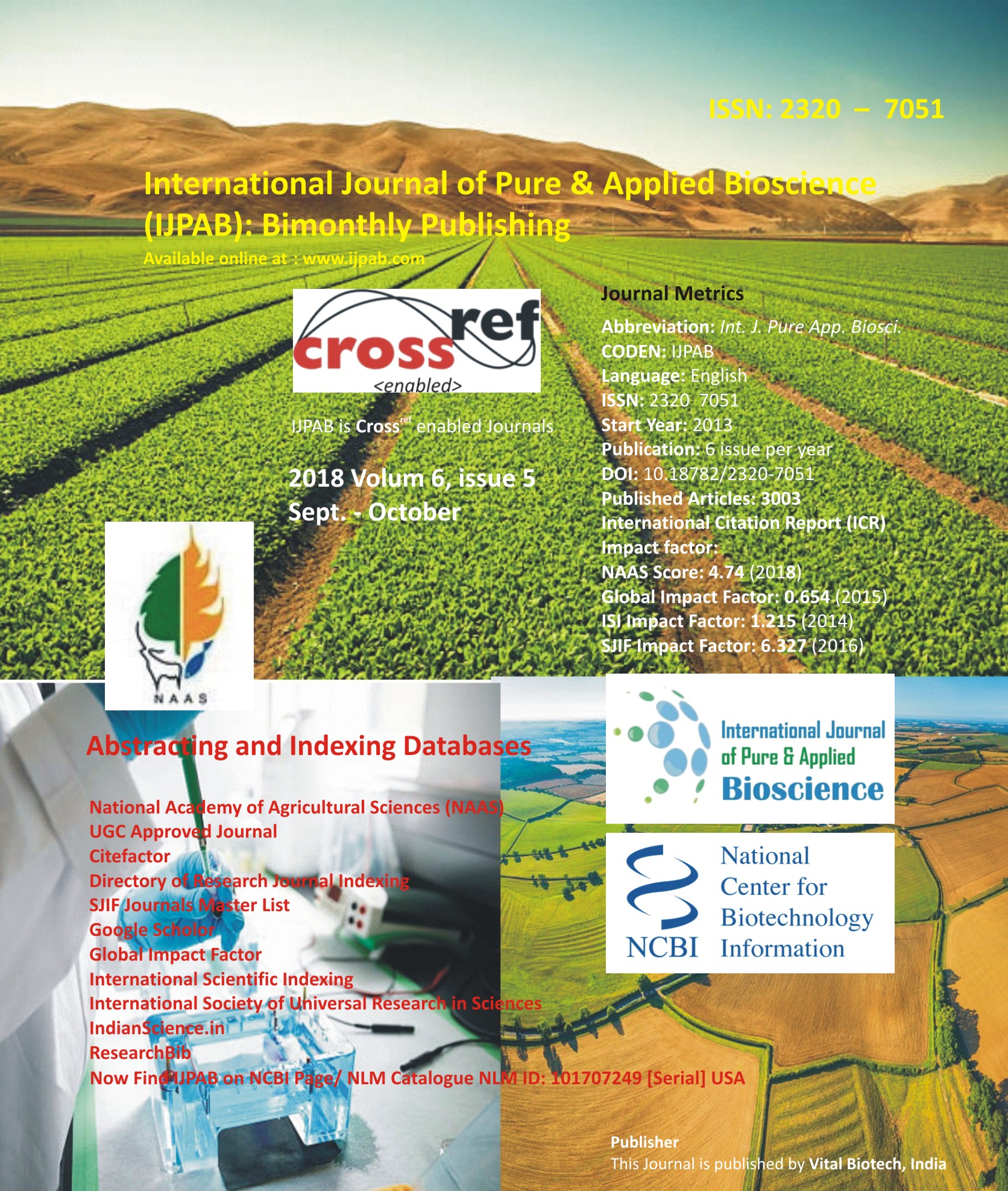
-
No. 772, Basant Vihar, Kota
Rajasthan-324009 India
-
Call Us On
+91 9784677044
-
Mail Us @
editor@ijpab.com
International Journal of Pure & Applied Bioscience (IJPAB)
Year : 2018, Volume : 6, Issue : 5
First page : (114) Last page : (123)
Article doi: : http://dx.doi.org/10.18782/2320-6780
Influence of Genetic and Morphological Markers in Evaluation of Jatropha Diversity
Vijay Yepuri, J.V. Narasimham, Sai Shankar P, Nagesh Kancharla, Saakshi Jalali and Arockiasamy S.*
Reliance Technology Group, Reliance Industries Limited, Navi Mumbai, Maharashtra, India
*Corresponding Author E-mail: arockiasamy.Savarimuthu@ril.com
Received: 7.08.2018 | Revised: 15.09.2018 | Accepted: 23.09.2018
ABSTRACT
Assessment of genetic diversity is a key prerequisite for genetic improvement of crops through plant breeding. In this study, genetic diversity analysis of 11 elite lines, developed out of the germplasm accessions of Jatropha curcas L. collected from Central American and Asiatic regions was performed using 279 SSR markers, of these 53 were newly developed from expressed sequence tags (EST) available in NCBI database. The alleles were scored and detected a total of 352 alleles across eleven 11 lines with mean value of 2.5 per locus. Besides, 110 SSRs were found to be polymorphic and the polymorphic information content (PIC) of these loci were in the range of 0.14 to 0.84 with an average of 0.44. The UPGMA cluster analysis of data showed the formation of two groups namely A and B and they exhibited a mean similarity coefficient of 33.8% and 36% respectively. The similarity coefficient range was from 0.14 to 0.58 with a mean of 0.36 at all SSR loci. The lowest similarity co-efficient was observed in EJC-CA1 line by forming a separate clade. The phenotypic correlation study between morphological traits namely number of fruits per bush (NF), number of seeds per bush (NS), seed weight per bush (SW), test weight (TW) and oil content percentage (OP) indicated positive among these traits. Based on average cluster analysis method, these 11 lines were categorised into three groups and the first cluster consisting of six lines found to possess high crop productivity when compared to other two clusters. The 3 clades thus formed were used to avoid crosses within the group while developing and testing hybrid combinations, thus a crossing effort of about 60% was saved due to the guidance provided by these markers.
Key words: Jatropha curcas, Genetic diversity, Morphological traits, Polymorphism, SSR.
Full Text : PDF; Journal doi : http://dx.doi.org/10.18782
Cite this article: Yepuri, V., Narasimham, J. V., Sai Shankar, P., Kancharla, N., Jalali, S. and Arockiasamy, S., Influence of Genetic and Morphological markers in evaluation of Jatropha diversity, Int. J. Pure App. Biosci.6(5): 114-123 (2018). doi: http://dx.doi.org/10.18782/2320-7051.6780

